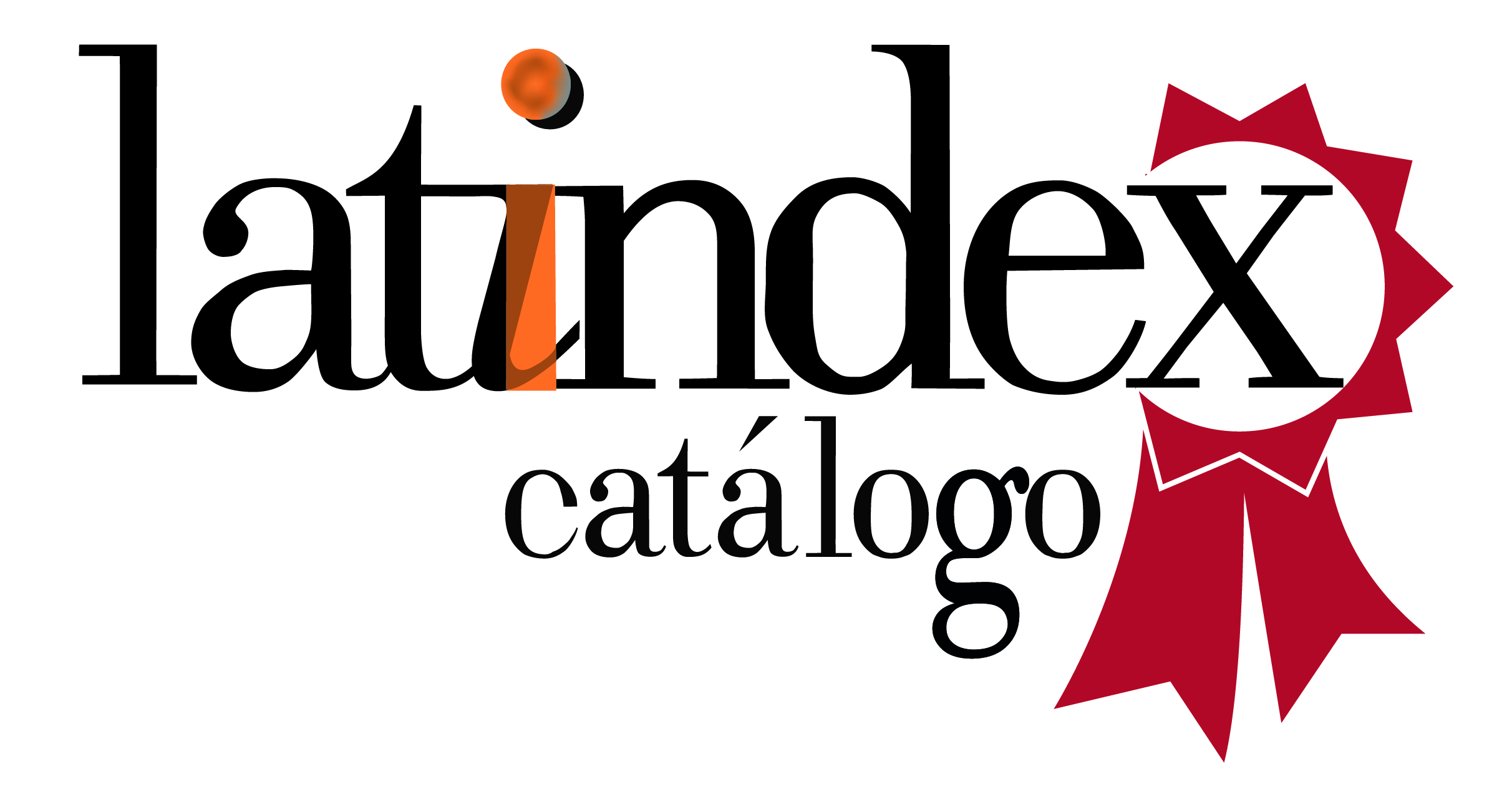Factors associated with the metabolically obese thin phenotype in Peruvian inhabitants
DOI:
https://doi.org/10.52379/mcs.v6i3.259Keywords:
obesity, metabolism, Epidemiologic Factors, Peru.Abstract
Introduction: Patients with the lean metabolically obese (BMD) phenotype may present the same risk as the classic obese for developing long-term chronic diseases. However, the prevalence and the factors that are associated with it vary according to the population studied.
Objective: to determine the prevalence and the factors associated with the BMD phenotype in Peru.
Methods: Cross-sectional analytical study. Secondary analysis of the PERU MIGRANT study database. The associated factors that were considered were: age (30-44 years, 45-59 years, and 60 years and over), sex, socioeconomic status, level of education, migration, smoking, alcohol consumption and level of physical activity.
Results: The prevalence of the BMD phenotype was 32.23% (95% CI 27.61-37.10). In the multivariate analysis, the male sex showed a 39% lower probability of presenting the BMD phenotype (PRa: 0.610; 95% CI 0.428-0.869; p=0.006), compared to the female sex. While belonging to the age groups between 45-59 years and 60 years and over presented 110.5% (PRa: 2.105; 95% CI 1.484-2.988; p<0.001) and 97.6% (PRa: 1.976; CI95% 1.270-3.075; p=0.003), respectively, greater probability of presenting BMD, compared to the group of 29-44 years.
Conclusions: Belonging to the female sex and to the age groups of 45 to 59 and 60 years or more, increased the probability of presenting the BMD phenotype. Future prospective studies with a larger sample size are recommended to confirm these findings, as well as the inclusion of new variables.
Downloads
References
Apovian CM. Obesity: definition, comorbidities, causes, and burden. Am J Manag Care. 2016;22(7 Suppl):s176-185. URL.
Malik VS, Willet WC, Hu FB. Nearly a decade on — trends, risk factors and policy implications in global obesity. Nat Rev Endocrinol. 2020;16(11):615–6. https://doi.org/10.1038/s41574-020-00411-y
Dai H, Alsalhe TA, Chalghaf N, Riccò M, Bragazzi NL, Wu J. The global burden of disease attributable to high body mass index in 195 countries and territories, 1990–2017: An analysis of the Global Burden of Disease Study. PLOS Medicine. 2020;17(7):e1003198. https://doi.org/10.1371/journal.pmed.1003198
Gómez-Zorita S, Queralt M, Vicente MA, González M, Portillo MP. Metabolically healthy obesity and metabolically obese normal weight: a review. J Physiol Biochem. 2021;77(1):175–89. https://doi.org/10.1007/s13105-020-00781-x
Pluta W, Dudzi?ska W, Lubkowska A. Metabolic Obesity in People with Normal Body Weight (MONW)—Review of Diagnostic Criteria. International Journal of Environmental Research and Public Health. 2022;19(2):624. https://doi.org/10.3390/ijerph19020624
Ding C, Chan Z, Magkos F. Lean, but not healthy: the “metabolically obese, normal-weight” phenotype. Curr Opin Clin Nutr Metab Care. 2016;19(6):408–17. https://doi.org/10.1097/MCO.0000000000000317
Mathew H, Farr OM, Mantzoros CS. Metabolic health and weight: Understanding metabolically unhealthy normal weight or metabolically healthy obese patients. Metab Clin Exp. 2016;65(1):73–80. https://doi.org/10.1016/j.metabol.2015.10.019
Benziger CP, Bernabé-Ortiz A, Gilman RH, Checkley W, Smeeth L, Málaga G, et al. Metabolic Abnormalities Are Common among South American Hispanics Subjects with Normal Weight or Excess Body Weight: The CRONICAS Cohort Study. PLoS One. 2015;10(11). https://doi.org/10.1371/journal.pone.0138968
Lee S-H, Han K, Yang HK, Kim H-S, Cho J-H, Kwon H-S, et al. A novel criterion for identifying metabolically obese but normal weight individuals using the product of triglycerides and glucose. Nutr Diabetes. 2015;5:e149. https://doi.org/10.1038/nutd.2014.46
Lee M-K, Rhee E-J, Kim MC, Moon BS, Lee JI, Song YS, et al. Metabolic Health Is More Important than Obesity in the Development of Nonalcoholic Fatty Liver Disease: A 4-Year Retrospective Study. Endocrinol Metab. 2015;30(4):522–30. https://doi.org/10.3803/EnM.2015.30.4.522
Jung CH, Lee MJ, Kang YM, Jang JE, Leem J, Hwang JY, et al. The Risk of Incident Type 2 Diabetes in a Korean Metabolically Healthy Obese Population: The Role of Systemic Inflammation. The Journal of Clinical Endocrinology & Metabolism. 2015;100(3):934–41. https://doi.org/10.1210/jc.2014-3885
Goday A, Calvo E, Vázquez LA, Caveda E, Margallo T, Catalina-Romero C, et al. Prevalence and clinical characteristics of metabolically healthy obese individuals and other obese/non-obese metabolic phenotypes in a working population: results from the Icaria study. BMC Public Health. 2016;16:248. https://doi.org/10.1186/s12889-016-2921-4
Jia A, Xu S, Xing Y, Zhang W, Yu X, Zhao Y, et al. Prevalence and cardiometabolic risks of normal weight obesity in Chinese population: A nationwide study. Nutr Metab Cardiovasc Dis. 2018;28(10):1045–53. https://doi.org/10.1016/j.numecd.2018.06.015
Wildman RP, Muntner P, Reynolds K, McGinn AP, Rajpathak S, Wylie-Rosett J, et al. The Obese Without Cardiometabolic Risk Factor Clustering and the Normal Weight With Cardiometabolic Risk Factor Clustering: Prevalence and Correlates of 2 Phenotypes Among the US Population (NHANES 1999-2004). Arch Intern Med. 2008;168(15):1617–24. https://doi.org/10.1001/archinte.168.15.1617
Yaghootkar H, Scott RA, White CC, Zhang W, Speliotes E, Munroe PB, et al. Genetic Evidence for a Normal-Weight “Metabolically Obese” Phenotype Linking Insulin Resistance, Hypertension, Coronary Artery Disease, and Type 2 Diabetes. Diabetes. 2014;63(12):4369–77. https://doi.org/10.2337/db14-0318
Scott RA, Fall T, Pasko D, Barker A, Sharp SJ, Arriola L, et al. Common Genetic Variants Highlight the Role of Insulin Resistance and Body Fat Distribution in Type 2 Diabetes, Independent of Obesity. Diabetes. 2014;63(12):4378–87. https://doi.org/10.2337/db14-0319
Miranda JJ, Gilman RH, García HH, Smeeth L. The effect on cardiovascular risk factors of migration from rural to urban areas in Peru: PERU MIGRANT Study. BMC Cardiovasc Disord. 2009;9:23. https://doi.org/10.1186/1471-2261-9-23
Whiting DR, Guariguata L, Weil C, Shaw J. IDF diabetes atlas: global estimates of the prevalence of diabetes for 2011 and 2030. Diabetes Res Clin Pract. 2011;94(3):311–21. https://doi.org/10.1016/j.diabres.2011.10.029
Stefan N. Metabolically Healthy and Unhealthy Normal Weight and Obesity. Endocrinol Metab (Seoul). 2020;35(3):487–93. https://doi.org/10.3803/EnM.2020.301
PERU MIGRANT Study | Baseline dataset [Internet]. figshare; 2016 [citado el 14 de marzo de 2021]. https://doi.org/10.6084/m9.figshare.3125005.v1
Wang B, Zhuang R, Luo X, Yin L, Pang C, Feng T, et al. Prevalence of Metabolically Healthy Obese and Metabolically Obese but Normal Weight in Adults Worldwide: A Meta-Analysis. Horm Metab Res. 2015;47(11):839–45. https://doi.org/10.1055/s-0035-1559767
Lee K. Metabolically obese but normal weight (MONW) and metabolically healthy but obese (MHO) phenotypes in Koreans: characteristics and health behaviors. Asia Pac J Clin Nutr. 2009;18(2):280–284. URL.
Alberti KGMM, Eckel RH, Grundy SM, Zimmet PZ, Cleeman JI, Donato KA, et al. Harmonizing the metabolic syndrome: a joint interim statement of the International Diabetes Federation Task Force on Epidemiology and Prevention; National Heart, Lung, and Blood Institute; American Heart Association; World Heart Federation; International Atherosclerosis Society; and International Association for the Study of Obesity. Circulation. 2009;120(16):1640–5. https://doi.org/10.1161/CIRCULATIONAHA.109.192644
Hajian-Tilaki K, Heidari B. Metabolically healthy obese and unhealthy normal weight in Iranian adult population: Prevalence and the associated factors. Diabetes Metab Syndr. 2018;12(2):129–34. https://doi.org/10.1016/j.dsx.2017.11.005
Poterico JA, Stanojevic S, Ruiz-Grosso P, Bernabe-Ortiz A, Miranda JJ. The Association Between Socioeconomic Status and Obesity in Peruvian Women. Obesity. 2012;20(11):2283–9. https://doi.org/10.1038/oby.2011.288
Bernabe-Ortiz A, Benziger CP, Gilman RH, Smeeth L, Miranda JJ. Sex Differences in Risk Factors for Cardiovascular Disease: The PERU MIGRANT Study. PLOS ONE. 2012;7(4):e35127. https://doi.org/10.1371/journal.pone.0035127
Escobar-Agreda S, Taype-Rondan A, Miranda JJ. Association between acculturation surrogates and alcohol consumption in rural-to-urban migrants: The PERU MIGRANT study. Journal of Migration and Health. 2021;3:100015. https://doi.org/10.1016/j.jmh.2020.100015
Boniface S, Kneale J, Shelton N. Drinking pattern is more strongly associated with under-reporting of alcohol consumption than socio-demographic factors: evidence from a mixed-methods study. BMC Public Health. 2014;14(1):1297. https://doi.org/10.1186/1471-2458-14-1297
Hyun Y j., Koh S j., Chae J s., Kim J y., Kim O y., Lim H h., et al. Atherogenecity of LDL and Unfavorable Adipokine Profile in Metabolically Obese, Normal-weight Woman. Obesity. 2008;16(4):784–9. https://doi.org/10.1038/oby.2007.127
Mostafa H, Amin AM, Teh C-H, Murugaiyah VA, Arif NH, Ibrahim B. Plasma metabolic biomarkers for discriminating individuals with alcohol use disorders from social drinkers and alcohol-naive subjects. J Subst Abuse Treat. 2017;77:1–5. https://doi.org/10.1016/j.jsat.2017.02.015
Murphy SE, Park SL, Balbo S, Haiman CA, Hatsukami DK, Patel Y, et al. Tobacco biomarkers and genetic/epigenetic analysis to investigate ethnic/racial differences in lung cancer risk among smokers. npj Precision Onc. 2018;2(1):1–10. https://doi.org/10.1038/s41698-018-0057-y
Carrillo-Larco RM, Miranda JJ, Gilman RH, Checkley W, Smeeth L, Bernabe-Ortiz A, et al. The HOMA-IR Performance to Identify New Diabetes Cases by Degree of Urbanization and Altitude in Peru: The CRONICAS Cohort Study. Journal of Diabetes Research. 2018;2018:e7434918. https://doi.org/10.1155/2018/7434918
Miranda JJ, Gilman RH, Smeeth L. Differences in cardiovascular risk factors in rural, urban and rural-to-urban migrants in Peru. Heart. 2011;97(10):787–96. https://doi.org/10.1136/hrt.2010.218537
Downloads
Published
Issue
Section
License
Copyright (c) 2022 Jamee Guerra Valencia, Jenny Raquel Torres Malca, Jesus E. Talavera, Fiorella E. Zuzunaga-Montoya, Jhony Alberto De La Cruz Vargas , Víctor Juan Vera-Ponce

This work is licensed under a Creative Commons Attribution 4.0 International License.











